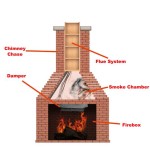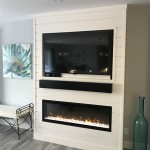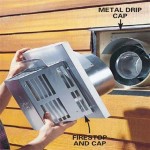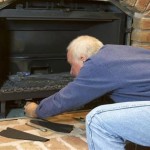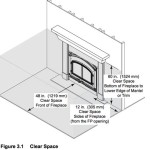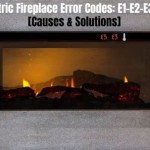Cleaning a Fireplace: A Comprehensive Guide
Maintaining a fireplace involves more than just enjoying its warmth and ambiance. Regular cleaning is crucial for optimal performance, safety, and longevity. Neglecting this task can lead to creosote buildup, which significantly increases the risk of chimney fires. Furthermore, accumulated ash can reduce airflow, hindering combustion and diminishing the fireplace's heating efficiency. This article provides a detailed guide on how to properly clean a fireplace, mitigating potential hazards and ensuring its continued safe use.
Before initiating the cleaning process, preparation is essential. Gather the necessary tools and protective gear to ensure a safe and effective procedure. This includes a fireplace shovel, a stiff-bristled brush (ideally with a long handle), a metal ash bucket with a lid, heavy-duty gloves, safety glasses, and a dust mask. It's also advisable to place a drop cloth or old newspapers around the fireplace to protect the surrounding floor from ash and soot.
Allow the fireplace to cool completely before commencing any cleaning activities. Embers can remain hot for several days after a fire, posing a significant burn risk. Ensure the ashes are cold to the touch before attempting to remove them. This precaution cannot be overstated, as even seemingly extinguished embers can reignite and cause injury or fire.
Key Point 1: Removing Ashes and Debris
The first step in cleaning a fireplace involves the careful removal of accumulated ashes and debris. Using the fireplace shovel, scoop the ashes into the metal ash bucket. Avoid overfilling the bucket, as this can make it difficult to handle and increase the risk of spills. As you shovel, be mindful of any remaining large pieces of unburned wood. These can be set aside for future use or disposed of separately.
Once the majority of the ashes have been removed, use the stiff-bristled brush to sweep the remaining fine particles and soot from the fireplace floor and walls. Pay particular attention to corners and crevices where ash tends to accumulate. A shop vacuum equipped with a HEPA filter can also be used to remove fine dust, but ensure the ashes are completely cold before vacuuming to prevent potential fire hazards.
After the ashes are collected in the metal bucket, securely close the lid. This prevents the ashes from scattering and minimizes the risk of accidental spills. The ash bucket should be stored in a safe location away from flammable materials until the ashes can be properly disposed of. Many municipalities have specific regulations regarding ash disposal, so it is crucial to check local guidelines before discarding the ashes.
Key Point 2: Cleaning the Firebox and Grate
The firebox, the interior compartment of the fireplace, and the grate, which supports the firewood, also require cleaning. After removing the ashes, inspect the firebox walls for creosote buildup. Creosote is a dark, tar-like substance formed from condensed wood smoke. Light creosote deposits may be scrubbed with the stiff-bristled brush and a solution of warm water and mild detergent. However, heavy creosote buildup requires professional removal.
The grate should be removed from the fireplace and thoroughly cleaned. Scrape off any accumulated ash and debris using the brush. If the grate is rusty, it can be cleaned with a wire brush to remove loose rust. A solution of soap and water can be used to clean the grate further. Once cleaned, allow the grate to dry completely before replacing it in the firebox.
Periodically inspecting the firebox for cracks and damage is also recommended. Cracks can compromise the structural integrity of the fireplace and potentially allow heat and smoke to escape, posing a safety hazard. If any cracks or damage are detected, consult a qualified professional for repair.
Key Point 3: Cleaning the Chimney
Cleaning the chimney is arguably the most critical aspect of fireplace maintenance. The chimney is responsible for venting smoke and combustion byproducts away from the home. Over time, creosote accumulates on the chimney walls, creating a significant fire hazard. The National Fire Protection Association (NFPA) recommends that chimneys be inspected and cleaned annually by a qualified professional.
While professional chimney sweeping is highly recommended, homeowners can perform basic chimney inspections. Using a flashlight, visually inspect the chimney flue for creosote buildup. If the creosote layer is thicker than 1/8 inch, it's time for a professional cleaning. Attempting to remove heavy creosote buildup yourself can be dangerous and ineffective without the proper tools and expertise.
Professional chimney sweeps use specialized tools and techniques to safely and effectively remove creosote from the chimney. They also inspect the chimney for structural damage and potential hazards. Regular chimney cleaning not only reduces the risk of chimney fires but also improves the fireplace’s overall efficiency and performance.
In summary, cleaning a fireplace encompasses several key steps, including removing ashes and debris, cleaning the firebox and grate, and inspecting and cleaning the chimney. Regular maintenance is essential for ensuring the safe and efficient operation of the fireplace, mitigating fire hazards, and prolonging its lifespan. While some tasks can be performed by homeowners, professional chimney cleaning is highly recommended for optimal safety and performance.

How To Clean A Fireplace Diy Basics

Winter Has Ended Now To Time Clean The Fireplace Home Matters Ahs

Fireplace Cleaning Tutorial Kippi At Home

Maintaining Fireplace Beauty Service In Richmond Va

Best Way To Clean A Fireplace Stacy Risenmay

Is It Ok To Use A Fireplace During The Summer

Add Chimney Fireplace Cleaning To Your Spring Do List

Pros And Cons Of Chimney Cleaning Logs

Chimney Sweep Cleaning Wethersfield Glastonbury Hebron Farmington

How To Clean Brick Fireplaces Mantels Hearths And More My Space
Related Posts

